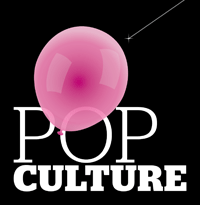
If you think life was tough in the old days, when housewives prepared dinner using manual can openers instead of microwave ovens, when teens rode bikes to school instead of SUVs, when changing TV channels required a hike across the living room, consider this: Not only did the hearty folk of yesteryear have to endure such hardships, they did so without the benefit of energy drinks!
Today, of course, it’s all but impossible to get through the rigors of the day without a steady dose of caffeine, glucose, taurine, and assorted B vitamins sprinting through your circulatory system. According to industry estimates, chronically sapped Americans currently drink $5 billion worth of the stuff a year, and that figure is expected to double by 2010.
If you enjoy golf but find the strenuous golf-cart steering that golf requires too exhausting to make it through a full round, Swing Juice, an energy drink designed specifically for duffers, may put a little Tiger-like swagger in your stroke. If you enjoy sex but lack the strength to pry open your bottle of Viagra with sufficient vigor, there’s MamaJuana, an energy drink that claims to improve sexual performance. You can buy energy drinks that sound vaguely wholesome (Dasani Refresh and Revive, Cranergy Energy Juice Drink, Brain Toniq), energy drinks that sound emphatically unhealthy (Cocaine, Blow, Fyxx, Venom), and even an energy drink for your skin (Shower Shock Body Wash, a palmful of which contains as much caffeine as a six-pack of Coca-Cola and presumably more cleansing power). If you find yourself so neurologically enhanced on Red Bull or one of its hundreds of competitors that alcohol and Oxycontin are no longer enough to bring you down gracefully, you can utilize self-described “anti-energy drinks” like Malava Relax and Drank to achieve sustained serenity in hyper-efficient fashion.
And once these liquid brain Swiffers help you achieve quiet mind, take a moment to ponder the mystery of why, in our highly automated, convenience-oriented world, where it’s so easy to do nothing at all that people routinely pay strangers to make them to do sit-ups, we’re so perpetually tired. Compared to our forefathers, who had to slaughter a cow, chop wood for a fire, and invent ketchup just to eat a hamburger, we should have energy to burn—and yet we can’t even traverse the drive-thru lane at Jack in the Box without cracking another can of Spike Shotgun.
What’s especially perplexing is why the nation’s teens are so exhausted. According to a 2007 study conducted by the Chicago-based market research company Mintel, they’re twice as likely as adults to qualify as regular energy drink consumers. Meanwhile, SAT scores, teen pregnancy rates, and teen crime have all been declining in recent years—so if they’re not using their extra energy to study harder, have more sex, or prey more viciously upon their elders, where is all their surplus vigor being expended? Is playing World of Warcraft for hours on end really that enervating?
On a similar note, what impact are energy drinks having on American culture? Have you noticed grocery store lines moving any faster in recent years? Do you spend less time waiting for doctors, post office workers, waiters and auto mechanics than you did a decade ago, or more? Thanks to products like Swing Juice and MamaJuana, we may boast the world’s most efficient golfers and lovers, but life in general seems pretty much the same as it did before the energy drink craze took hold.
On some level, however, energy drinks must provide some value, because consumers aren’t spending $5 billion a year just to guzzle sticky chemical swill that tastes like off-brand cough syrup. And, indeed, who can deny the 350 milligrams of Schedule II metaphor they pack into every shiny, neon-hued can?
In our not-too-distant dystopian future, when our gas-starved cars are useless, and a Big Mac costs $100, and the government no longer pipes potable water into your kitchen but you find yourself wading through the globally warmed Pacific Ocean just to get from your bedroom to your garage, it is going to take Olympic levels of strength and stamina just to survive everyday life. In such an environment, a simple pause that refreshes won’t cut it. Even a Starbucks Grande won’t cut it. But high-tech, nutritionally weaponized blends of caffeine, glucuronolactone, inositol, taurine, l-carnatine, and guarana, all packaged in shiny, colorful cans that look like designer artillery shells? Equipped with such potent provisions, hope lightly fizzes eternal.






Previous Discussion: